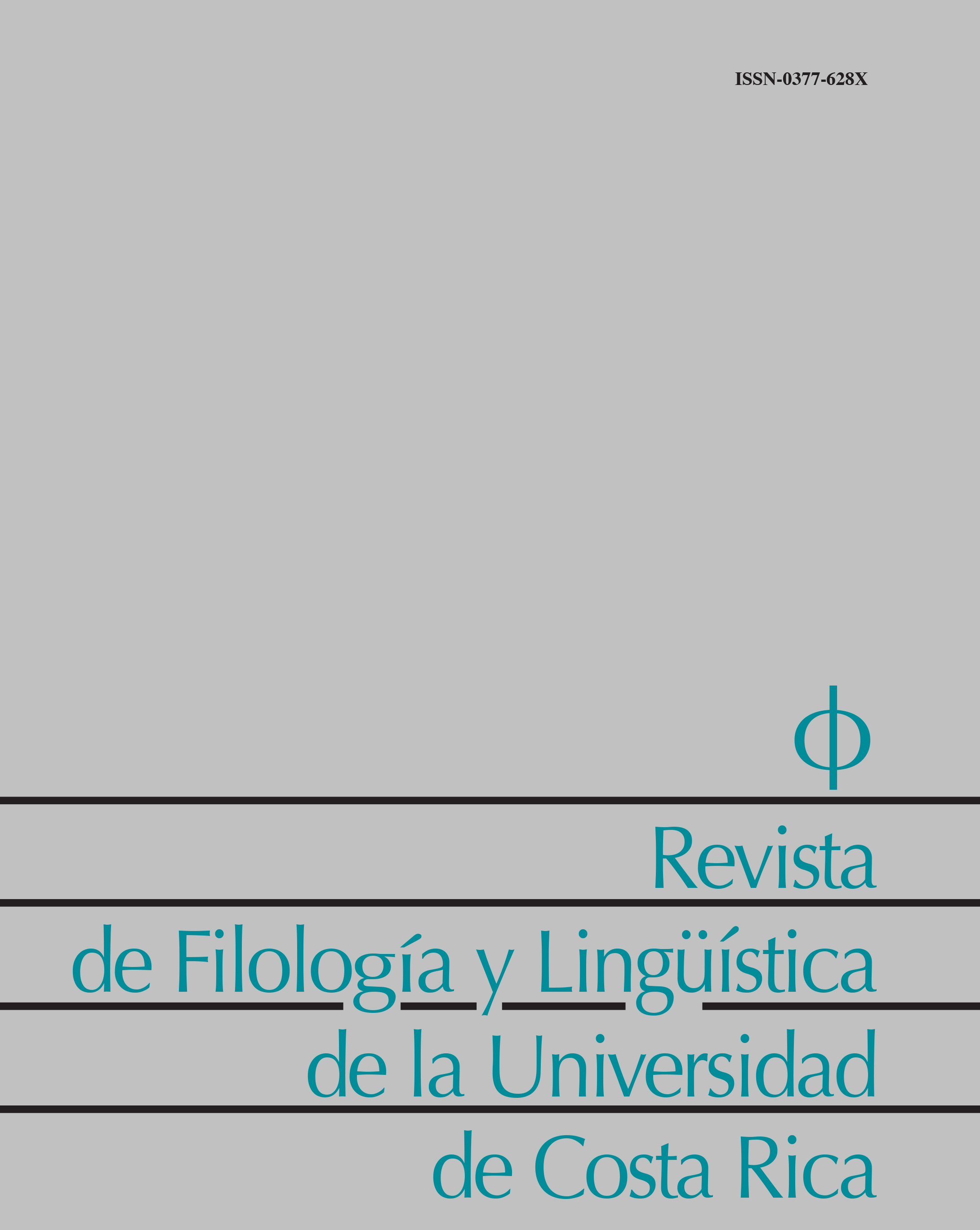Abstract
According to Guillermo Cabrera Infante (Cabrera Infante, 1967, p. 221) language is a forest of words. The Cuban author also stated in his novel Tres tristes tigres: Sometimes using the right phraseological unit is not as difficult as finding a needle in a haystack, which would be comparatively easy, but rather as difficult as finding a needle in a stack of needles. Corpas Pastor (2003, p. 109) simply asserts: “[L]a fraseología [...] está de moda”. And still today phraseology is relevant especially in the didactics of foreign languages. In a first step, we will illustrate benefits of incorporating literature in language classes in general. Afterwards we show these benefits of using the example of the Chilean poet Nicanor Parra (1914-2018) and the Austrian writer of experimental poetry Ernst Jandl (1925-2000). Concluding with a synthesis, two projects are introduced: the minimum of phraseological units that are to be learned and the project of Widespread Idioms in Europe and Beyond.
References
Brennan, J. (2007). Prologue. En J. Brennan y A. Taboada (Eds.). How to Survive in the Chilean Jungle. La otra patita. An English Lexicon of Chilean Slang & Spanish Sayings. (pp. 6-12). Santiago de Chile: Saenz.
Cabrera Infante, G. (1967). Tres tristes tigres. Madrid: Espasa.
Corpas Pastor, G. (1998). Criterios generales de clasificación del universo fraseológico de las lenguas, con ejemplos tomados del español y del inglés. En M. Alvar-Ezquerra y G. Corpas Pastor (Eds.). Diccionarios, Frases, Palabras. (pp. 157-187). Málaga: Servicio de publicaciones de la universidad.
Corpas Pastor, G. (2003). Usos y valores de para nada en un corpus de español peninsular actual. En G. Corpas Pastor (Ed.). Diez años de investigación en fraseología: Análisis sintáctico-semánticos, contrastivos y traductológicos. (pp. 109-123). Madrid: Iberoamericana.
Hallsteinsdóttir, E., Šajánková, M. y Quasthoff, U. (2006). Phraseologisches Optimum für Deutsch als Fremdsprache. Ein Vorschlag auf der Basis von Frequenz- und Gefläufigkeitsuntersuchungen. Linguistik Online. 27. Recuperado de https://bop.unibe.ch/linguistik-online/
Huidobro, V. (2010). Altazor o el viaje en paracaídas. (2 ed.) Madrid: Petrópolis.
Jakobson, R. (1979). Linguistik und Poetik. En E. Holesnstein y T. Schelbert (Eds.). Ausgewählte Aufsätze 1921-1971. (pp. 83-121). Frankfurt am Main: Suhrkamp.
Jandl, E. (1997). Poetische Werke. Por K. Siblewski (Ed.). München: Luchterhand.
Jandl, E. (1969/1971/2001). laut+luise, hosi+anna. Sprechgedichte. [CD] Berlín: Wagenbach.
Lüger, H. H. (1997). Anregungen zur Phraseodidaktik. Beiträge zur Fremdsprachenvermittlung. 32, 69-120.
Mieder, W. (1992). Sprichwort – Wahrwort!? Studien zur Geschichte, Bedeutung und Funktion deutscher Sprichwörter. Frankfurt am Main: Lang.
Parra, N. (1996). Trabajos Prácticos / Hojas de Parra. Santiago de Chile: CESOC.
Parra, N. (2006a). Obras completas & algo †. Por N. Binns. (Ed.) Barcelona: Galaxia Gutenberg.
Parra, N. (2006b). Obras Públicas. Santiago de Chile: W.R.S.
Piirainen, E. (2010). Weit verbreitete Idiome in kulturhistorischen Bezügen: zum Verbreitungsmodus einiger Idiomgruppen. En Das Wort. Germanistisches Jahrbuch Russland 2010. (pp. 167-181). Bonn/Moskau: DAAD.
Piirainen, E. (2012). Widespread Idioms in Europe and Beyond. Toward a Lexicon of Common Figurative Units. Nueva York: Lang.
Segura García, B. (1997). Kulturspezifische Phraseologismen in literarischen Texten und ihre Interferenzen beim Übersetzen vom Spanischen ins Deutsche. En A. Sabban (Ed.). Phraseme im Text. Beiträge aus romanistischer Sicht. (pp. 221-236). Bochum: Brockmeyer.
Zuluaga, A. (2006). Sobre las funciones de los fraseologismos en textos literarios. Paremia. 6, 631-640.

